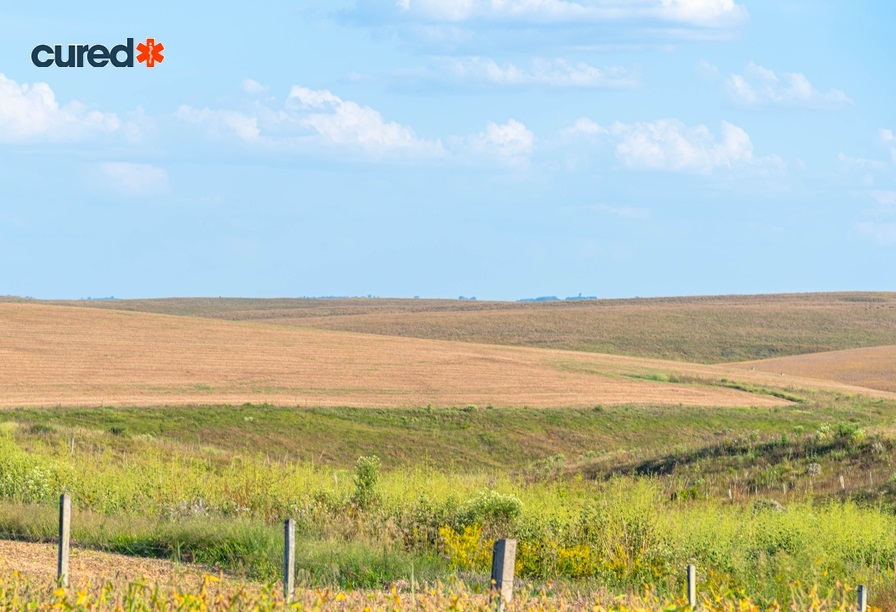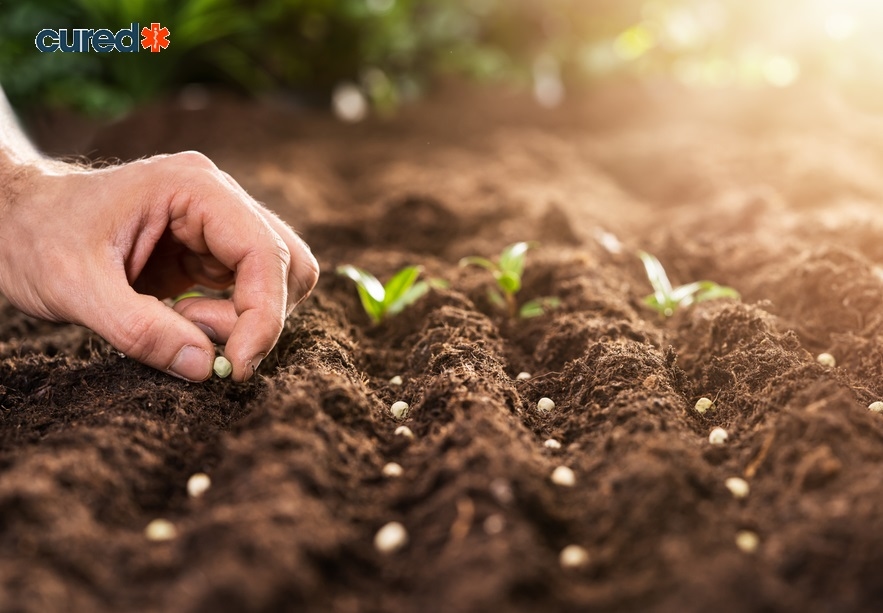How To Start A Vegetable Garden - Planning, Tips, & Benefits

How to start a vegetable garden? How can one efficiently plant vegetables in their garden? What should be the design? What are the various benefits of the garden? Should you have a vegetable calendar? Let's discuss these questions!
There are a few obvious reasons to start growing food in your vegetable garden in these pandemic times. Food security is one of the reasons to start a vegetable garden. For a very long time now, people have taken their supermarkets and farmer's markets for granted. Now that their shelves are mostly empty, it is essential to start rationing food due to the bulk purchasing during lockdown periods.
In addition to food security, there are plenty of other benefits to growing your food. On the one hand, growing your own food in your vegetable garden helps reduce the overall environmental impact associated with fruits and vegetables. To reach your supermarket shelves, vegetables have to travel hundreds and thousands of miles. On the other hand, you can choose an eco-friendly approach to growing your vegetables, relying on fewer pesticides and other synthetic fertilizers and chemicals.
There are many health benefits attached, too, if you ask how to start a vegetable garden. By growing your own fruits and vegetables, the odds are you and your entire clan are going to eat them more. You might even start to follow health recommendations by experts and maintain your physical fitness levels.
It is not just about eating your grown food; it is also essential to grow it correctly. You need to know how to pull the weeds out, work and till the soil to prepare it for planting, and how important it is to dig correctly. When you consider how to start a vegetable garden, you are looking forward to food supplies and a way to work out. Activities involved in vegetable gardening will help you work out your muscles and burn lots of calories.
Added to your physical fitness, starting a vegetable garden is also good for your mental health. Gardening is a great way to alleviate stress levels since it involves a lot of mental exercises. The simplicity of the small things involved in the process helps your mind get refreshed and boost your overall mood. The pleasure of planting and picking out your grown vegetables is genuinely something worth all the effort.
More than everything, what counts to growing the vegetable garden of your dreams is to get your hands dirty. Below we are sharing some easy tips that you can use to start growing your vegetables. So, are you ready to know how to start a vegetable garden?
1. Permaculture and agricultural techniques

Suppose you are worried about how to start a vegetable garden to grow your food and do it right outdoors to nurture and protect your ecosystem. In that case, you should probably consider knowing the fundamentals of permaculture.
To explain it in easy terms, permaculture is the method to manage agriculture by taking inspiration from the ways of nature. If you notice closely, nature organizes itself and is naturally balanced. Permaculture helps you organize your system in a synchronized manner to build up the resilience of your vegetable garden ecosystem. This is done by carefully observing, planning, and organizing your land. It also involved understanding crop diversity and crop rotation.
You should be able to manage energy cycles efficiently through understanding permaculture fundamentals. For example, you can use waste as your by-product to be later used in different ways like organic humus through composting it.
2. Outlining a plan
The second step on how to start a vegetable garden is to outline a simple plan for your garden. This plan can be based on other's knowledge as well. So, if you are planning to grow something in your garden, look for someone nearby who has done it. Take their knowledge and know whether it will work or not.
Ask these people what works best for them and what doesn't. Get to know about specific climatic conditions to grow your food.
By doing so, you might as well avoid disappointing yourself by not getting success the first time. Having a plan outlined and the appropriate knowledge gives you confidence in the first try itself.
So, know the type of soil available near you, what grows best in your area, and the suitable sowing and harvesting times for things you are looking to grow. Also, know the quantity you can produce of every variety and whether you can sell to others.
Ensure that you know that some vegetables can only be planted during warmer months of the year, while some are resistant to heat. A few vegetables and fruits can be easily sown several times a year, allowing for continuous vegetative growth.
3. Find an area with good sunlight.

Ideally, your future vegetable garden should receive approximately 6-8 hours of direct sunlight every single day. In warmer climates, this exposure can be reduced with some of your crops getting less sunlight.
So, if you are looking at how to start a vegetable garden, ensure you know what can be grown where. For example, you can quickly grow herbs with the help of a small greenhouse.
4. Soil inclination and water source
Take a closer look at your soil and water sources near your vegetable garden. Ensure you are starting your vegetable garden near the source of water so you can easily water it. Remember, you can take the help of a water hose to reach further distances if nothing works out for you.
You can also take the help of automatic irrigation systems, install them and keep your garden hydrated. Or install a water-saving container that helps you save and store rainwater. This can be used later in the dry areas of your garden.
Soil inclination should be known before you start your garden. If you grow your plants/vegetables at the bottom of the slope, you might notice waterlogging as your future problem. And once your garden starts waterlogging, the roots of your vegetables are going to drown. However, if your land is sloped from the top, your garden will dry out pretty quickly. Ensure you have an excellent balance between growing fruits and vegetables successfully.
5. Keep tools handy

Either order them from large retailers or just buy them online. Still, you have to keep your tools handy before you start your vegetable garden. You will need a rake, a wheelbarrow or a spading fork, and a pair of gloves to start. You can easily get these items from anywhere.
While, at the same time, visit local cooperative stores or even your neighbor and talk about the tools necessary to start your home vegetable garden. You might be able to borrow a few of them if you are not looking to buy them at first.
6. Preparing your soil
It is very easy for the roots of your plants to infiltrate the softer, sandy spots of soil. Once you figure out your garden's exact location and size, which should be approximately 200 square feet per person for a year, take out your weeds and till the soil. After tilling the soil, you should nurture it with suitable organic materials like worm humus fertilizer or compost. This gives the soil and your future plant seeds the extra nutrition they require to better size and taste.
7. Planting seeds

Now that you know the location of your vegetable garden in your backyard, so it gets the best of your local climate, sunlight, and water, it is time to plant your seeds.
Your seed packets will always indicate the top months you can plant them to pick your vegetables later. These packets will also give you instructions on how deep your seeds should be planted. The smallest seeds should ideally be sprinkled on the top of the soil surface. In contrast, the larger seeds should be planted 2-5 centimeters below the top layer. Follow the instructions carefully, and a significant part on how to start a vegetable garden shall be covered.
8. Watering your garden
Watering your vegetable garden should not happen every single day. It can happen almost two or three times every week. This forces the roots to reach further down in the soil and seek the right amount of moisture. This also helps improve the plant's resilience.
While watering your garden, you should also ensure you are regularly removing the undesired weeks. They can come up every now and then and start to reproduce, making them stronger and stealing the nutrients from your vegetables. Do not let this happen.
For an outdoor vegetable garden, it is essential to water regularly and check for weeds. While you are doing so, you should also check for bugs.
9. Patience

Once you have done everything right, there is not much left to do now. You need to just wait patiently for the vegetables to grow out. While you wait patiently, you can start by digging the internet to look for some fantastic recipes to cook with your home-grown ingredients. Start planning on how you are going to use your vegetables and fruits.
Keep checking your vegetable garden calendar regularly to know if the time to plant new crops is closer or not!
Patiently watch your garden grow. Do not rush anything. Producing will take its time. At first, you will see initial developments like stems coming out of the soil on the surface. It might be tiny at first, sometimes hidden underneath the soil. Do not worry or hurry; your plants will be delicate.
At the initial stages, the roots tend to get stronger, only after which your surface growth begins. Do not pick the small vegetables out while they are green. You will risk losing their potential flavors. Just be patient!
10. Start harvesting
Now that you have waited patiently for so long, the time is finally here to reap the benefits. Collect the vegetables and fruits you have grown when they are finally mature. There are various methods to harvest different types of vegetables and fruits. Some are harvested better with scissors, while others are better when hand-picked. Figure out the right way to harvest your vegetables and whip up some delicacies for you and your family.
Final Words
Are you still confused about how to start a vegetable garden? Fret not! Follow these tips and tricks to plant your seeds better and harvest more vegetables every single year. It is time-consuming but thinks of all the physical and mental health benefits you gain from doing all the work! Plus, you get to eat clean. Bookmark this article, share it with your friends and family, so the next time someone asks you how to start a vegetable garden, you will know the correct answers.
Tour Price
Our private tours typically range from $500 - $1000 per person/per night depending on chosen hotels and room categories, vehicles used, types of tours, flight cost, time of year and other factors. Make an inquiry for a customized trip quote.

